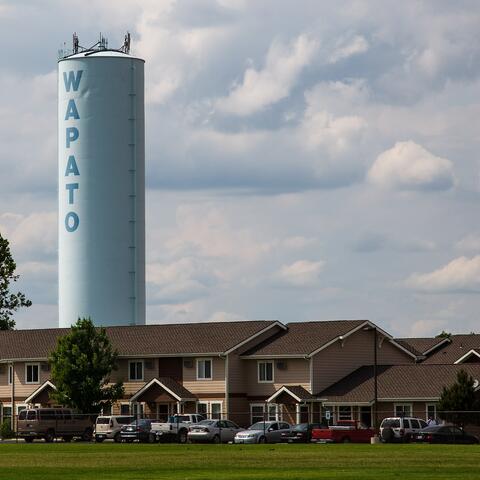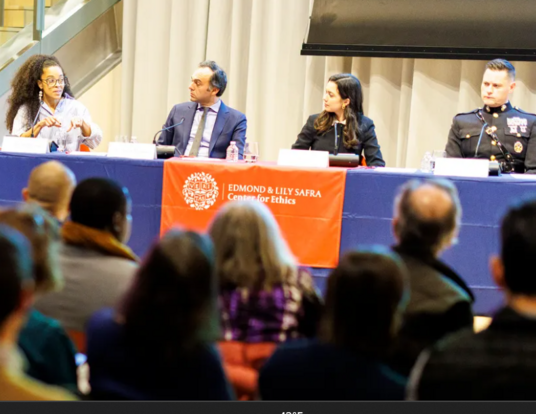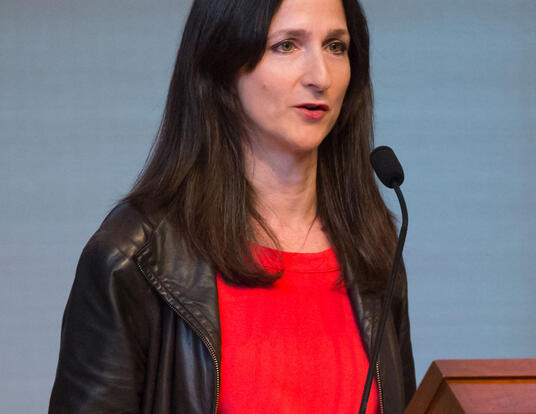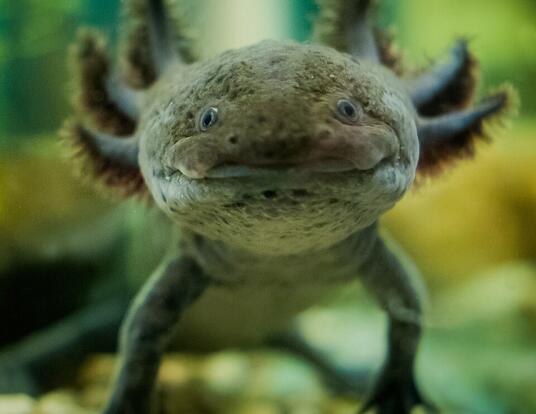Veritalk: Monsters Episode 3 - King Kong vs. Gravity
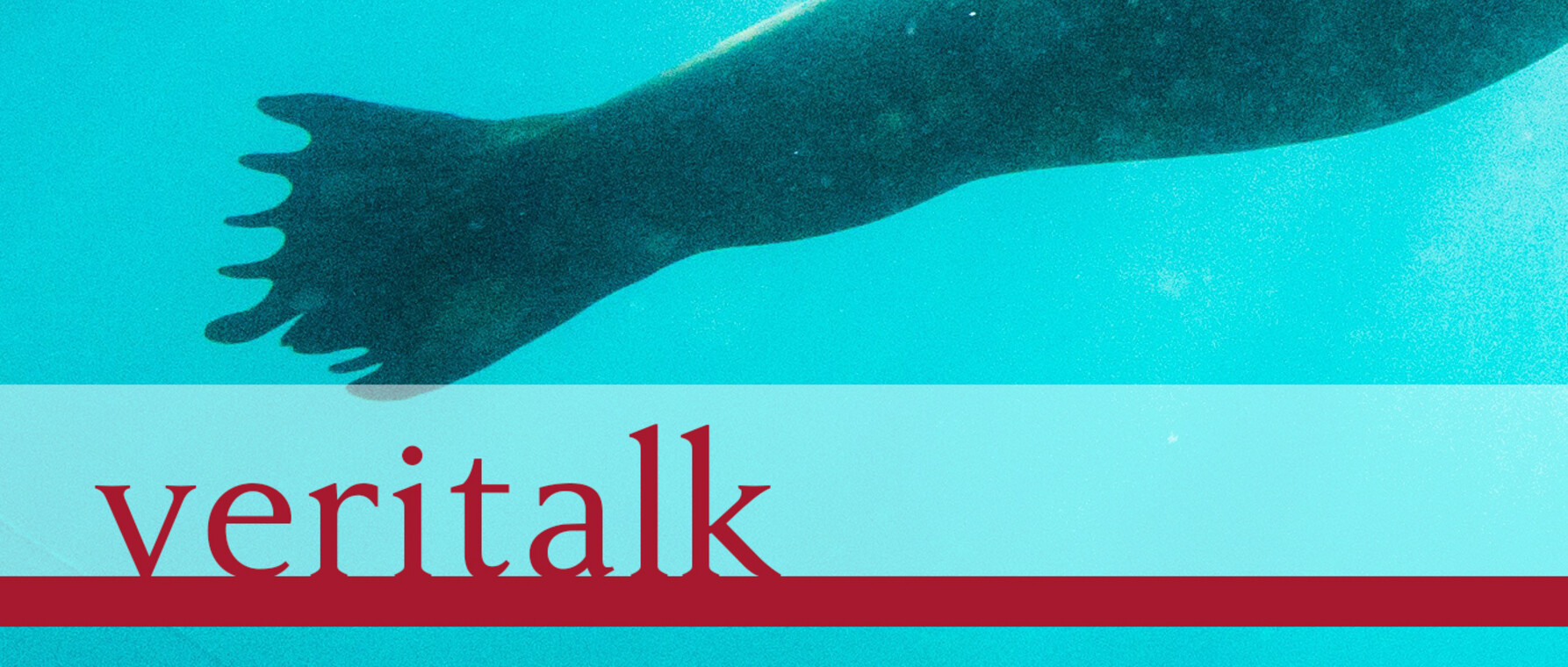
From Godzilla to King Kong to the Meg, giant beasts fascinate us. So why aren't there T-Rex-sized creatures roaming the streets of New York and Tokyo? If you ask Shane Campbell-Staton, there are some really good reasons why we don't find huge monsters all over the planet. But, the evolutionary biologist and host of The Biology of Superheroes podcast has a warning: The wild creatures that do exist out there are evolving in ways we can't always predict, and they're living closer to humans than ever before.
Subscribe to Veritalk
Full Transcript
Voices: I mean, why?
Anna Fisher-Pinkert: From the Harvard Graduate School of Arts and Sciences, you’re listening to Veritalk. Your window into the minds of PhDs at Harvard University.
Voices: I was curious. . . I've always wondered. . . why?

AFP: In the last episode, we brought you the story of a shape-shifting monster that lives inside of the human body. And before that, we brought you the story of murderous mermaids. But we haven’t talked about the heavy-hitters of the monster world. Literally, the heavy hitters.
[Screams. "What's that?" "What you're looking at is a monster from some bygone era. "Long live the king!"]
AFP: So I decided to call in an expert.
Anna in Studio: My first question to you is: Why don't we see something like King Kong or something like Godzilla running around outside right now?
Shane Campbell-Staton: So this is a pretty big question. And there could be several explanations.
AFP: That’s Shane Campbell-Staton, he has a PhD from the Graduate School of Arts and Sciences in Organismic and Evolutionary Biology, and he worked at the Museum of Comparative Zoology at Harvard.
SCS: Yes, so, I just started as a professor and assistant professor at the UCLA Institute for Society and Genetics and the Department of Ecology and Evolutionary Biology.
AFP: Plus, he is the co-host of a really excellent podcast called "The Biology of Superheroes."
SCS: Yes, so, myself and a good friend of mine, Arien Darby, we started this podcast called, "The Biology of Superheroes," where we take different stories from comic books and science fiction and really dig into the biological underpinnings of all this weird fantastic crazy stuff that we see on the screen or in the pages.
AFP: So, as an expert in real and imaginary creatures, Shane has a few good explanations for why King Kong isn’t scaling the Empire State building right now.
SCS: If there was something of that size running around now, you know, we probably would have killed it by now. Mastodons and mammoths, giant sloths, you know, all of these really large creatures that occurred you know with earlier forms of of man. . . they didn't last very long once we met in the same place at the same time.
AFP: But, that’s not the only reason. . .
SCS: In order to be big, you need a lot of energy. And typically animals get that energy from oxygen. So oxygen availability can be a major limitation — and one of the thoughts is that things used to be so large because there was a lot more oxygen in the air.
AFP: When you say that, does that mean that in Jurassic Park, T-rex should have had an asthma attack?
SCS: [Laughs] So not necessarily. I mean because we do still have some large things, right? I mean elephants, giraffes, blue whales they are still massive animals. I mean, the blue whale is as large as any animal that has ever existed. But generally speaking, when we look across the tree of life and like the size distribution of large groups of organisms they have had a tendency to be skewed towards being larger in the past. So that is what these general trends are meant to try to explain.
AFP: So when we talk about the origin story for something like Godzilla where it's this ancient sea monster that kind of lines up with things in the past were pretty big, right?
SCS: Yeah, it does. One of the major issues that comes along with size is life history, right? If you're going to be really large it takes a while to build up that much biomass. So even today, things that have a tendency to be large also have a tendency to be very long lived. There is some speculation that there are whales swimming in the oceans right now that you know were around during the time of Moby Dick. You know these are extremely long lived animals. So if you take something like Godzilla, it's like, well, where did this massive thing come from all of a sudden? Well if it was hibernating or hiding in like some reclusive part of the world, I mean, it's possible that something so large has just been around and living.
AFP: Right. Right. But I mean beyond that, beyond just having oxygen, there are other issues of being big, right?
SCS: There are a lot of issues with being big. I mean there's I mean gravity . . . gravity is unforgiving. When it comes to size not only do things get bigger but they also have to change their shape. Alright. So if you look at a mouse versus an elephant, an elephant isn't just larger but it's shaped very differently. So if you think about like an elephant's limbs, they're very long and they look like the columns of a building. They are placed directly under their bodies. That has a lot of different implications for how an animal can move. So you know mice can sort of, you know, scurry around and jump and do backflips and all of this sort of stuff. I've actually seen mice do backflips, it's kind of terrifying but I have never seen an elephant leave all four of its limbs at the same time. And that's just a consequence of being so large and having to support so much more mass for his appendages. So when we scale all the way up to the most massive animals on the planet, the whales, they sort of escape that constraint because they live in the water. Generally speaking, the largest groups of animals are all aquatic. And they can be so large because they don't have to fight off gravity.
AFP: So this really busts the idea of having King Kong. We couldn't have an ape the size of a skyscraper that just wouldn't work at all.
SCS: I think both King Kong and Godzilla, at the very least they would have to be built very differently than what we typically see as a lizard or a or a primate. They would definitely have to remodel their body shape in order to support that much weight.
AFP: So, if you’re big — you need lots of oxygen, a long life, and industrial-strength limbs. But if you want to survive, you also need to eat.
SCS: I mean, this is one of the things that worries me the most about Godzilla. If you just go into Tokyo and you start smashing things, at some point you get hungry. And as a carnivore that means you have to hunt. But all of the prey that are available are so tiny with respect to your size — and being big requires a lot of energy. The largest animal on the planet, the blue whale, it is still technically a carnivore. It spends its life eating krill, which are these small crustaceans. But a blue whale has to take in something like eight thousand pounds of food every single day. I have no idea how long it would take me to eat eight thousand pounds of food but every single day that's what it has to do just to stay alive and keep swimming.
AFP: Right. You would have to eat a lot of bus loads full of people before you feel a little bit full.
SCS: Many, many busloads. yeah. [laughs]
AFP: But there are parts of the King Kong story that aren’t so unbelievable. Kong lives on Skull Island, which is an isolated place full of giant beasts. And, believe it or not, Shane says that there is a real concept in evolutionary biology called “island gigantism” that could explain how he got so big.
SCS: Islands as a whole have a tendency to be relatively young, those habitats do, which means that there's a lot of free space for an animal to move in and fill. And when you move in to fill that new space your body can change, your dietary habits can change, your behavior changes, and it can send you down very strange evolutionary trajectories.
AFP: One example is the komodo dragon. The komodo dragon’s ancestors were much much smaller, but, once isolated on islands in Indonesia, the dragon could grow. . . and grow. . .
SCS: Komodos are pretty massive animals. They get up to about ten feet long, and they weigh about 150 lbs. If you’ve ever seen a Nile monitor or a savannah monitor, they’re relatively large, or they’re much larger than a gecko, for instance, but they’re nowhere near the size of a komodo dragon.
AFP: But the biggest influence on the next phase of evolution is not going to be island gigantism — it’s gonna be us.
SCS: This is, I think, one of the most important questions in modern evolutionary biology. How will all of the drastic changes that are happening now, a lot of which seem to be directly linked to our own actions, how will that influence the life of the other species on the planet? So when you move into colder climates, things have a tendency to get larger but that also means that when you move into warmer climates, things have a tendency to get smaller. So when we think about climate change, because you know there is again this relationship between volume and surface area. It means that if it's very warm and you're trying to maintain a certain temperature, which mammals like to do, then you have to figure out how to dump excess heat. And it's easy it's easier to do that if you're smaller than if you're larger because you have less volume to surface area.
AFP: You might think that it’s going to take millennia before we start to see the impacts of climate change on the physiology of animals. But — you’d be wrong. It’s already happening.
SCS: Typically when we think about evolution we think about it as this sort of very long gradual process. I mean that's certainly that was certainly Darwin's thought when he first proposed it. And that was one of the things that we're finding out now that he actually got wrong. So for instance, you know, a good colleague of mine Kristin Winchell has been studying lizards that live in cities. This specific type of lizard, called an anole, typically occurs in forests and it hangs out on branches and tree trunks. But in the cities it is hanging out on buildings, using concrete and metal — these very artificial smooth surfaces on these very broad perches. The side of a building is much, much wider than a tree trunk, for instance. And she's found that in response, city lizards have evolved much longer limbs than their forest counterparts and they've evolved larger toe pads that allow them to cling to vertical surfaces. They're much larger in the cities than they are in the forests and even when you bring these animals into a laboratory and you raise them under the exact same conditions, they still have longer limbs and larger toe pads. So this is evolution playing out in cities. Over the course of a few decades.
AFP: When the mad scientist in a monster movie says “It’s evolving!” it seems totally, completely contrived, right? Well, turns out it’s not that crazy.
SCS: I mean, so the raw material for you know for adaptive evolution. Right. I mean it's selection. So we can look at evolution over generations, but even within a single generation, we can see change in response to extreme events.
AFP: There’s a really recent example of this in Shane’s research — he studied how a population of small lizards weathered a polar vortex storm in Texas and Oklahoma.
SCS: When I was looking at response to this extreme weather event, these polar vortex storms that passed through Texas and Oklahoma, the survivors of this storm — they were able to deal with much colder temperatures than the population was before that storm hit. And this is something that happened within a generation. So the beginning of the study and the end of the study were all within 365 days. And we see this significant change just within that timeframe. But that is that selection. You have an extreme pressure that specifically chooses some subset of a population that is able to survive and reproduce. Now if in surviving and reproducing their offspring also have those traits that allowed that previous generation to survive, now you have evolution. But even within the case of these lizards, I mean, they reproduce in a single year. So even within two years you can pick up this — this change.
AFP: Now, climate change isn’t the only way that humans can influence evolution.
SCS: In the latest movie "Rampage" with you know with Dwayne Johnson, there's you know this company that does some sort of genetic engineering that you know gets out and infects a gorilla and and a wolf and an alligator and then they get humongous and destroy the city of Chicago.
["Are you familiar with genetic editing? The changes will be incredibly unpredictable."]
SCS: Generally speaking our ability to manipulate genomes in this very directed way using technology is becoming a reality right. I mean CRISPR/Cas9 technology is increasingly improving our ability to target specific genes in the genome and turn those genes on or off or even swap in and out a different version of those genes. And this is being used to treat all sorts of genetically based diseases. But also, we've been tinkering with genomes for a very, very long time.
AFP: Even before humans had access to technology like CRISPR, they were tinkering around with other species’ evolution.
SCS: When I go home, you know, I walk into the house and I'm greeted by a hundred-and-thirty-pound slobbering thing that used to be a wolf.
AFP: But, just because we have a hand in shaping evolution, that doesn’t mean we’ve mastered it.
SCS: If there's anything that humans like to think, it's that we can control stuff. It's sort of funny in this situation, because we are at least in terms of urbanization and pollution, we are very tangibly controlling certain aspects of the environment. But we can't control how organisms respond to those pressures, as much as we like to try to.
AFP: Greg Darwin, the folklore expert, said that people stopped believing in selkie tales around the time that people started moving into urban centers. But as modern urban environments encroach further and further into wild places, it seems like we’re finding monsters at our doorstep all over again.
SCS: So even here in Los Angeles, we have predators like foxes and even mountain lions that live in the city limits with us. And they get caught on home surveillance cameras behind people's backyards. And even a few years ago, there was a mountain lion that caused a pretty big stir in LA because it broke into the zoo and ate and killed a koala. So as cities grow and encroach, we'll continue to see this human-animal conflict. And the evolutionary consequences that play out in very interesting and somewhat unpredictable ways
AFP: We might not have to face down Godzilla or King Kong any time soon — but that’s not much comfort if a mountain lion just stole your chihuahua. It’s like they said in Jurassic Park - life finds a way.
SCS: Life does find a way. Jeff Goldblum is always correct in my opinion.
AFP: That’s the end of our series on Monsters. If you want to check out Shane Campbell-Staton’s podcast that he co-hosts with Arien Darby — it’s called The Biology of Superheroes, I highly recommend it to anyone who loves nerding out over things like Jurassic Park, Spiderman, or the multiverse. If you liked listening to THIS show, download our previous episodes about Plumage and about Displacement. You can find those episodes on Apple Podcasts, Radio Public, or wherever you get your podcasts. Veritalk is produced by me, Anna Fisher-Pinkert. Our sound designer is Ian Coss. Our logo is by Emily Crowell. Our executive producer is Ann Hall. Special thanks this week to Shane Campbell-Staton and Graham Ball.
Logo by Emily Wilson
Get the Latest Updates
Join Our Newsletter
Subscribe to Colloquy Podcast
Simplecast


